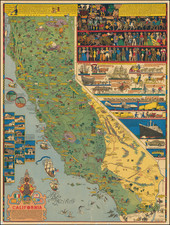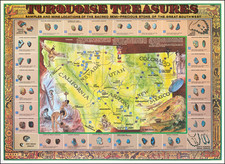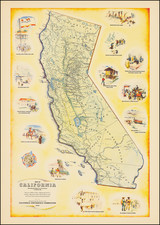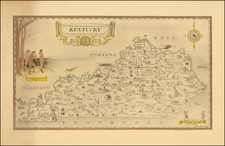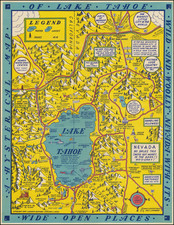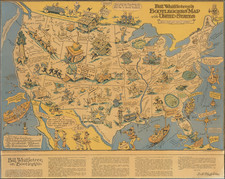Printed Using The Marinoni Rotary Press
Striking image of Paris and the Paris Exposition of 1900, published by Le Petit Journal "Le Journal Le Mieux Informe Quatre Millions de lecteurs," printed by D. Cassigneul.
The map notes the printed process as "imprime sur machine rotative chromotypographique de Marinoni" (printed on Marinoni rotary chromotypographic machine).
Marinoni Printing Machine
Hippolyte Auguste Marinoni (1823 - 1904), was a manufacturer of printing machines, in particular the “stereo cliché” rotary press, and a press owner with Le Petit Journal. He is considered to be one of the founders of the modern press.
In 1838, he joined the typographic machine manufacturer Pierre-Alexandre Gaveaux (1782-1844). In 1847 , Marinoni manufactured his first two-cylinder press - known as a “reaction press” - which printed 1,500 sheets per hour. In 1850, he participated in the development of the reel and cylindrical plate press of Jacob Worms, a German immigrant who had been experimenting since 1835 with machines using coils and bent stereos. The Worms presses, the first produced in France, but also in the world with "stereo cliché", were never marketed.
Marinoni created his own manufacturing company in 1847 , and developed, among other things, a lithographic machine. In 1866, he filed patents for a rotary withdrawal press and a cylinder press with six feeders, the "rotary press brake". In 1872, he provided the newspaper La Liberté with the first rotary of the French press, then he installed five in the Petit Journal, a daily in which he took shares, when the Millaud family had to withdraw. With Émile de Girardin and two other partners (Gibiat and Jenty), he gradually took control of this press group.
In 1882, he became head of the Petit Journal, which he made into a reference newspaper, adding to his qualities as an inventor and mechanic those of a true “press boss”. Sensing the importance of color, in 1889 he built a color press. From the Sunday Supplement of the Petit Journal.









